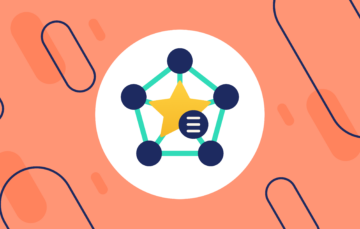
The problem with data is not that there isn’t enough of it. The problem with data is that there’s too much of it. According to Splunk’s The State of Dark Data, IT decision makers estimate that on average 55% of their data is dark (which means unknown or untapped).
Take a moment to stop and think about the ways you’ve interacted with different technologies and systems in the last hour.
Did you send an email?
Log-in to a CRM system at work?
Purchase something online?
Check social media?
Browse the internet?
Chat with customer service?
Open a couple apps on your phone?
Stream a show on your TV?
Maybe even all of the above? These are all examples of the data footprints being collected.
Our current digital age has seen an explosion of data. The ways information is gathered, tracked, and stored across our many different devices is growing exponentially year over year. To put the data acceleration in context, the Harvard Business Review, in 2012, shared about 2.5 exabytes of data was created daily on the internet. In 2025, the World Economic Forum estimates that amount to be 463 exabytes. (And for even more context 1 exabyte = 1 billion gigabytes)
The World Economic Forum goes on to contextualize the vast numbers by giving the following example: at the beginning of 2020 the number of bytes in the digital universe was 40X bigger than the number of stars in the observable universe.
This exponential growth is unfathomable to comprehend. Today more data crosses the internet every second than what was stored across the entirety of the internet 20 years ago. The sheer volume of incoming data creates an enormous efficiency problem. There’s simply too much of it to wrangle which makes it hard to sift and prioritize what information to even look for. So the majority of information collected sits in the dark, unused.
What is Dark Data?
Dark data is secured and stored, but rarely used for other business use cases despite being generated as a result of customers’ daily interactions across countless devices and systems — everything from digital touchpoints to server log files to unstructured data derived from conversations.
According to Gartner, dark data is “the information assets organizations collect, process and store during regular business activities, but generally fail to use for other purposes (for example, analytics, business relationships and direct monetizing). Similar to dark matter in physics, dark data often comprises most organizations’ universe of information assets. Thus, organizations often retain dark data for compliance purposes only.”
This data is inaccessible or unusable due to several different factors:
- High volume: There’s simply too much stored data with a high cost attached to process and organize it.
- Varied file formats: With digital enhancements and rise in omnichannel, data comes from multiple sources and formats, making it hard to structure in a routine way. There’s currently limited mechanisms or ways to activate stored data (especially when this data may be housed in older, legacy systems).
- Velocity of incoming data: Organizations simply generate more data than can be processed in an efficient and effective way. On top of that, incoming data is from new data systems (created in the last 10-20 years). CRM, ERP, SCADA, HTTP, WIFI are all relatively new data systems that are constantly evolving and changing.
Why tackle the seemingly impossible task of mining dark data?
AI technologies are enabling access to these previously inaccessible data sources. Enhanced machine learning, rules-based classifiers, learning models, and other listening tools are increasing the feasibility and efficiency of analyzing huge data stores. In the past, the lack of human and technology resources made access to big data analytics in healthcare impossible, but this stored data is a vital source of economic opportunity to better serve business and customer needs.
At the end of the day, insights from data help drive smart and effective business strategy which offers a competitive advantage. Having the ability to draw insights from stored data equips organizations to better assess opportunities for growth.
Aggregating and activating this data offers a rich source of insights that can help:
- Listen to the voices of your customers for unsolicited feedback
- Proactively identify disruptions, identify recurring patterns, and positive trends
- Break down silos to build cross-functional teams sharing a single source of data insights
- Make data-backed decision with statistically significant sample sets
- Provide context at scale that accounts for every voice of your customer population
- Enables personalization and customization options
Consumer expectations are shifting and organizations are taking notice. There’s more focus and support for Know Your Customer (KYC) initiatives and a desire to provide a personalized and customized customer experience to help drive business outcomes. Authenticx helps clients leverage data they’re already collecting to tackle relevant business use cases and questions by tapping into dark data.
This brings value to a majority of data that, at present, is simply being stored and ignored. Take steps to activate your dark data to bring actionable insights to your organization.
About Authenticx
Authenticx was founded to analyze and activate customer interaction data at scale. Why? We wanted to reveal transformational opportunities in healthcare. We are on a mission to help humans understand humans. With a combined 100+ years of leadership experience in pharma, payer, and healthcare organizations, we know first-hand the challenges and opportunities that our clients face because we’ve been in your shoes.
Want to learn more? Contact us!


